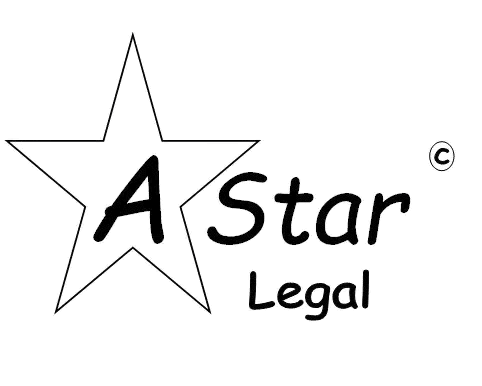Last updated on June 3rd, 2025 at 06:53 am
ISO 14971 refers to the risk management in medical devices. It is developed to mitigate the risks in the medical device industry.
Obtaining ISO 14971 for the organization ensures that the medical devices are safe and effective to use. Risk management is an important aspect of the medical device lifecycle. It helps to enhance the patient’s safety and also helps improve the product’s safety. ISO 14971 helps to streamline the development process and facilitates continuous improvement within the organization.
Table of Contents
ToggleWhat is ISO 14971?
ISO 14971 is an international standard for Medical Devices— Application of risk management to medical devices. It helps to identify and minimize the potential risks from the devices. Risk Management is one of the most important requirements of ISO 14971.
History
ISO 14971 was first known as EN 1441. It was published in 1997 with the name “Medical Devices– Risk Analysis”. After that, in 1998, ISO 14971-1 was published with the name “Medical Devices– Risk Management”. Then, in 2000, the first edition of ISO 14971 was launched for “Medical Devices– Application of risk management to medical devices”. After with few modifications, in 2007, the second edition of ISO 14971 was published with the name “Medical Devices — Application of risk management to medical devices”. After the modification and requirements were added, the third edition of ISO was launched in 2019 for “Medical Devices — Application to risk management of medical devices.
Key definitions
- Risk- Risk refers to the accurate representation of the risk management in the given harm. It can be numerical and translated to the low, medium, or high scale.
- Risk analysis- It is the process against the predefined criteria to identify, assess, and evaluate the risk
- Risk estimation- It is the process to consider the probability of the risk and the harm severity associated with medical devices.
- Risk evaluation- It is the process to compare the predefined criteria of risk acceptance and risk analysis
- Risk assessment- This is a process to identify and evaluate the hazards to minimize them within the system.
- Risk control- It is a process where the manufacturers execute measures to minimize the identified risks.
- Risk management file- It involves the complete documentation of the risk management. Also includes the results and activities throughout the lifecycle of medical devices.
- Post-market surveillance- Post-market surveillance is the process to monitor and review the medical device performance and to ensure its safety.
Why is ISO 14971 important?
Risk management in medical tools refers to the systematic approach for identifying potential risks, analyzing, and assessing associated hazards, and implementing measures to decrease or eliminate them. It is important because it helps to minimize the risks to the individual, property.
What are the benefits of ISO 14971?
- Enhances patient safety
- Regulatory compliance
- Improved product quality
- Reduced reliability
- Cost saving
- Enhanced reputation
- Improved communication
- Facilitates continuous improvement
- Streamlined development process
Why perform a risk analysis
Risk analysis is important to identify the risks in medical devices to ensure that the devices are used and the risks are managed throughout their lifecycle.
How are ISO 14971 & ISO 13485 related?
ISO 13485 is an international standard for the Quality Management system of medical devices, and ISO 14971 is a standard for risk management in medical devices. Both are related to each other because both the ISOs are on medical devices; the main difference is that ISO 13845 focuses on the quality of medical devices, and ISO 14971 manages the risk within the medical devices to prevent harm.
ISO 14971 Basic Concepts
Harm- A harm is a damage or injury to the individual or the property that can result in a hazardous situation.
Hazards- Hazard refers to harm. For example, there is a medical device that has a sharp edge in it, that sharp edge can cause a cut.
Hazardous situation- A Hazardous situation occurs when the combination of circumstances exposes people or property to more than one hazard. For example, if a medical device has a sharp edge present in it, and the patient accidentally touches it, a hazardous situation occurs.
What is risk management planning?
Risk management planning in ISO 14971 means that a detailed plan needs to be implemented to analyze the risk hazards in the medical devices and systematically manage them.
Top management & Risk management
The top management has the responsibility to identify the risks in the products and conduct an appropriate risk management assessment to assess these risks effectively. Top management must ensure that the management processes are documented, described, and controlled as part of the quality system process.
Risk management refers to a systematic approach of identifying, assessing, mitigating, and addressing potential risks. When risk management is fully implemented in the organization, it starts minimizing the risks from the systems. The responsibility of risk management should always be beyond the top management.
Common Risk assessment tools
The common risk management tools are-
- Risk Matrix
- HACCP (Hazard analysis and critical control point)
- FMEA (Failure Mode Effects Analysis)
- PHA (Preliminary Hazard Analysis)
- FTA (Fault Tree Analysis)
- HAZOP (Hazard Operability Analysis)
Process for applying ISO 14971
- Understand ISO 14971- Deeply understand the requirements of ISO 14971.
- Risk management plan development- Create a detailed plan to identify, assess, and control the risk hazards.
- Implementing risk management- Implement the plan to manage the risks within the systems.
- Hazard identification- Identify the hazards that are associated with medical devices. Also consider the factors like foreseeable misuse and intended use.
- Risk analysis- A detailed analysis must be conducted to identify and asses the each harm caused by hazard.
- Risk control- Measures must be taken to minimize the risks and changes in designs.
- Monitor and review- The risk management should be regularly monitored and reviewed to ensure the effectiveness of the devices
- Internal audit- An Internal audit must be conducted to check whether risk management is completely involved in the systems or not.
- Choose a certification body- Choose a certification to apply for the ISO 14971 certificate.
- External audit- An External audit will be conducted by the certification to verify whether the risk management is followed by the organization or not.
- Receive certificate- If audits are successful, the certificate will be issued.
Requirements
- Risk management plan
- Hazard identification and analysis
- Risk estimation and evaluation
- Risk control measures
- Verification and validation
- Documentation
- Post-production monitoring
- Acceptance criteria
- Roles and responsibilities
- Communication
Documents required for ISO 14971 certification
- Risk management plan
- Risk analysis
- Risk evaluation
- Risk control measures
- Residual risk evaluation
- Implementation and verification of risk control measures
- Risk management file
- Risk analysis techniques
- Risk assessment
- Risk management software
Who can take the ISO 14971 Certificate?
- Medical device manufacturers
- Product development team
- Quality assurance professionals
- Regulatory affairs professionals
- Risk management professionals
- Engineers
Cost
The cost of ISO 14971 depends on-
- Complexity of the medical devices
- Size of the organization
- Internal resources
- Training cost
- Auditing cost
- Technology and process changes
- Certification body
- Standard fee
Processing time
If you are applying ISO 14971 from A Star Legal Associates, then you will get an ISO 14971 certificate within 24 hours.
Validity
3 years
ISO 14971 Certification Consultants
A Star Legal Associates provides ISO 14971 in India. ISO 14971 is the most important certification to minimize the risks in medical devices. A Star Legal Associates provides ISo 14971 in a very short time and ina affordable prices. So, Contact Our A Star Legal Associate team today to apply for the ISO 14971 certificate.
Conclusion
ISO 14971 certification significantly contributes to both the protection and performance of medical devices. By integrating hazard management applications into the entire goods lifecycle, producers can mitigate potential risks and deliver high-quality goods to patients and users. Obtaining an ISO 14971 certification greatly enhances career potential, providing specialized expertise and opening doors in the medical device field.
FAQ
What is ISO 14971
ISO 14971 is an international standard for Medical Devices —Application of risk management for medical devices.
What does the ISO 14971 guide on
ISO 14971 guides risk management.
What is the current version of ISO 14971?
The current version of ISO 14971 is ISO 14971:2019.
Who provides ISO 14971 in India?
A Star Legal Associates provides ISo 14971 in India at a very reasonable price.
What is the risk matrix of ISO 14971
The risk matrix is a risk assessment tool in ISO 14971.



